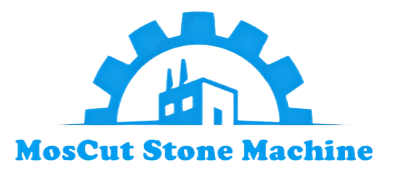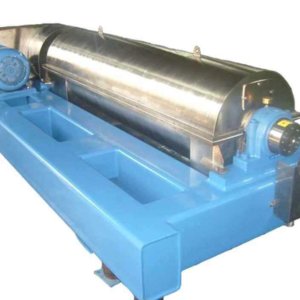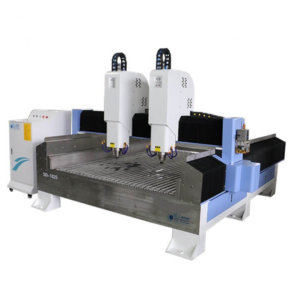1. Introduce of Mono block bridge saw machine
2. Training and Safety on mono-block bridge saw machine
3. Environmental Considerations of bridge saw machine
4. Functions of Mono Block Bridge Saw Machine
5. Details of Mono Block Bridge Saw Machine
6. Mono Block Bridge Saw Machine Specifications
Introduce of Mono block bridge saw machine
Mono block bridge saw machine is also called All In One bridge saw machine. It combines all the machine parts into one whole design. Normally the hydraulic part of machine is design separately with machine, but this mono block bridge saw machine combine hydraulic parts and electronic cabinet into machine steel stand. Out mono block bridge saw machine is a multi-functions bridge saw machine. With mono block design,hydraulic working pump and electronic cabinet are combined into iron stand of machine. In this case, machine takes only a small workshop space. The blade up and down is designed with four hydraulic columns to make sure a strong and precise cutting for both marble and granite cutting.
Training and Safety on mono-block bridge saw machine:
Proper training is necessary for operators to safely and efficiently operate bridge saw machines. Training programs are typically offered by machine manufacturers or industry organizations. Operators should familiarize themselves with the machine’s controls, safety features, and best practices to minimize the risk of accidents and ensure a productive work environment.
Training and safety are essential aspects of operating a bridge saw machine. Proper training ensures that operators have the necessary skills and knowledge to safely and effectively use the machine, while safety measures are implemented to protect operators from potential hazards. Here are some key points regarding training and safety in the context of bridge saw machines:
1. Operator Training:
Operators should receive comprehensive training on the operation, controls, and maintenance of the bridge saw machine. The training should cover topics such as machine setup, material handling, cutting techniques, blade changing, safety procedures, and emergency protocols. Training can be conducted by the machine manufacturer, equipment supplier, or certified trainers familiar with bridge saw machines.
2. Safety Guidelines and Procedures:
Clear safety guidelines and procedures should be established and communicated to all operators. These guidelines should cover aspects such as personal protective equipment (PPE) requirements, safe material handling practices, proper use of machine guards, lockout/tagout procedures, and emergency response protocols. Operators should be aware of potential hazards and follow established safety procedures at all times.
3. Risk Assessment:
A thorough risk assessment should be conducted to identify potential hazards associated with the operation of the bridge saw machine. This assessment should consider factors such as the cutting process, material handling, electrical hazards, and ergonomics. By identifying potential risks, appropriate safety measures can be implemented to minimize or eliminate hazards.
4. Machine Guarding:
Bridge saw machines should be equipped with appropriate machine guarding to prevent operators from coming into contact with moving parts or cutting blades. Guards should be in place to protect operators from flying debris, rotating parts, and potential pinch points. Operators should be trained to never remove or bypass machine guards unless authorized and necessary for maintenance tasks.
5. Personal Protective Equipment (PPE):
Operators should wear appropriate personal protective equipment to protect themselves from potential hazards. This may include safety glasses or goggles, hearing protection, gloves, and safety footwear. The specific PPE requirements should be communicated during training, and operators should be encouraged to use the provided PPE at all times when operating the machine.
6. Maintenance and Inspection:
Regular maintenance and inspection of the bridge saw machine are vital for identifying and addressing potential safety issues. Operators should be trained to conduct routine inspections, such as checking for loose or damaged components, verifying proper blade alignment, and ensuring the machine is in good working condition. Any maintenance or repairs should be performed by qualified technicians following established procedures.
7. Emergency Preparedness:
Operators should be trained on emergency procedures and have access to emergency stop buttons or switches to quickly halt machine operation in case of an emergency. They should know how to respond to situations such as blade breakage, power failures, or injuries. Regular drills and refreshers on emergency protocols can help ensure operators are prepared to handle unforeseen situations.
8. Continuous Training and Refresher Courses:
Training should be an ongoing process to keep operators up to date with the latest safety practices and machine advancements. Continuous training and refresher courses help reinforce safe operating procedures, promote a safety-conscious mindset, and ensure operators are knowledgeable about any updates or changes to the machine.
9. Compliance with Regulations and Standards:
Bridge saw machine operators and owners should comply with relevant safety regulations and standards, such as those set by occupational health and safety authorities. These regulations may include requirements for machine guarding, operator training, risk assessments, and safety inspections. Compliance with these regulations helps ensure a safe working environment and minimizes the risk of accidents or injuries.
Training and safety measures are crucial for promoting a safe working environment and preventing accidents when operating a bridge saw machine. By providing comprehensive training, establishing and enforcing safety procedures, and promoting a culture of safety, operators can confidently and responsibly operate the machine, minimizing the risk of injuries and maintaining a productive and safe workplace.
Environmental Considerations of bridge saw machine:
Bridge saw machines can generate significant amounts of stone dust and debris during operation. It is important to have proper dust collection systems in place to minimize airborne particles and maintain a clean work environment. Compliance with local environmental regulations is crucial to ensure the safe disposal of waste materials.
Environmental considerations are important when using a bridge saw machine to minimize the impact on the environment and promote sustainable practices. Here are some key points regarding environmental considerations in the context of bridge saw machines:
1. Dust and Particle Emissions:
Bridge saw machines generate a significant amount of dust and particles during the cutting process. This can have environmental implications if not properly managed. Implementing effective dust collection and filtration systems helps reduce the release of airborne particles into the surrounding environment. This not only improves air quality but also ensures compliance with environmental regulations.
2. Waste Management:
Bridge saw machines produce waste materials such as stone or other types of debris. Proper waste management practices should be in place to minimize the environmental impact. Recycling or repurposing waste materials, where feasible, can help reduce the amount of waste sent to landfills. Additionally, adhering to local waste disposal regulations and guidelines is crucial to ensure responsible waste management.
3. Water Conservation:
Water is commonly used in the cutting process to cool the blade and flush away debris. Implementing water conservation measures can help minimize water usage. This may include the use of recirculating water systems or water recycling technologies. By reducing water consumption, bridge saw machine operators can contribute to water conservation efforts and reduce the strain on local water resources.
4. Energy Efficiency:
Efficient energy use is an important consideration for minimizing the environmental impact of bridge saw machines. Choosing machines with energy-efficient motors and controls can help reduce energy consumption during operation. Additionally, turning off the machine when not in use and optimizing cutting parameters to minimize energy usage can contribute to energy conservation.
5. Noise Pollution:
Bridge saw machines can generate significant noise levels during operation, which can have environmental and health impacts. Implementing noise reduction measures, such as installing sound-absorbing materials or enclosures, can help minimize noise pollution in the surrounding area. This is particularly important if the machine is operated in residential or noise-sensitive areas.
6. Sustainable Material Selection:
Consideration should be given to the sustainability of the materials being cut using the bridge saw machine. Sustainable material choices, such as recycled or locally sourced materials, can help reduce the environmental impact. Additionally, promoting the use of environmentally friendly materials and educating customers on sustainable options can contribute to a more sustainable approach in the industry.
7. Regulatory Compliance:
Adhering to local environmental regulations and guidelines is essential. This includes obtaining any necessary permits or licenses required for operating the bridge saw machine. By following environmental regulations, operators can ensure that their activities are in compliance with applicable laws and minimize any negative impact on the environment.
8. Training and Awareness:
Educating operators about the importance of environmental considerations and providing training on environmentally responsible practices is crucial. By raising awareness and promoting a culture of environmental responsibility, operators can actively contribute to minimizing the environmental impact of bridge saw machine operations.
By implementing environmentally conscious practices, bridge saw machine operators can reduce their environmental footprint and contribute to sustainable practices in the industry. These efforts not only benefit the environment but also enhance the reputation of businesses as responsible and environmentally aware entities.

Functions of Mono Block Bridge Saw Machine
- On this Mono block Bridge Saw Machine, the blade can rotation for 90 degree horizontally
- Machine blade can tilting for 45 degree vertically
- Table can stand up for 85 degree
- All automatic computer control panel with easy operation
Details of Mono Block Bridge Saw Machine






Mono Block Bridge Saw Machine Specifications
| Item | unit | Value |
|---|---|---|
| Blade Diameter | mm | 500 |
| Range of Vertical and Horizontal Motion | mm | 3000 |
| Water consumption | M3/h | 4 |
| Horizontal Revolving of Machine Head | n | 90 |
| Overturning Angle of Worktable | n | 85 |
| Vertical Revolving o Machine Head | n | 45 |
| Power Of Main Motor | KW | 18.5 |
| Size of the Machine | mm | 5800*3500*2250 |
| Machine weight | T | 4.8 |








